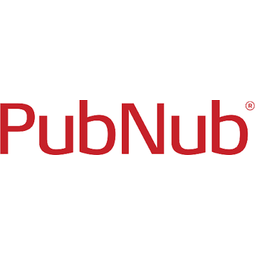下载PDF
JUNO's Transformation of Virtual Events with PubNub
技术
- 基础设施即服务 (IaaS) - 虚拟私有云
- 可穿戴设备 - 虚拟现实(VR)眼镜/耳机/控制器
适用行业
- 水泥
- 建筑与基础设施
适用功能
- 质量保证
- 销售与市场营销
用例
- 施工管理
- 实时定位系统 (RTLS)
服务
- 测试与认证
- 培训
挑战
数字活动和参与平台 JUNO 在 2020 年面临着重大挑战,因为全球大流行对虚拟活动的需求激增。该平台举办大型、多日、多场次的观众活动,随着各行业被迫将现场活动转移到网上,该平台经历了指数级增长。 JUNO 的规模迅速扩大了两倍,并开始托管和连接数百万用户。然而,这种快速增长也带来了问题。他们的活动经常出现人数爆满的情况,参与者往往超过数千人,JUNO 需要为其应用内聊天提供更可靠、可扩展的解决方案。他们已经在使用 Vonage 来实现 OpenTok、视频和音频会议功能,但他们需要一个能够处理无限并发用户并继续与他们一起成长的解决方案。
关于客户
JUNO 是一个一体化数字活动和参与平台,可举办大型、多日、多场次的观众活动,个人可以在其中建立联系、学习和探索商机。这些活动范围从贸易协会展览、商务会议到认证课程。 JUNO 的虚拟活动方法是独一无二的,专注于将虚拟和混合时刻发展成持久的互动社区,让人们可以继续学习和联系。他们举办过跨多个行业的活动,客户包括食品技术专家协会、美国心脏协会,甚至一家大型专业体育组织。
解决方案
JUNO 转向 PubNub 来解决其可扩展性和可靠性问题。 PubNub 的平台提供了 JUNO 继续其增长模式所需的可靠性、可扩展性和承载无限并发用户的能力。通过利用 PubNub 的平台,JUNO 能够构建与面对面体验一样引人入胜的数字体验。凭借 PubNub 的灵活性和定制选项,JUNO 在聊天之上添加了多种互动功能,以提高观众的参与度和乐趣。这些功能包括聊天、民意调查、实时测验、在线状态(实时了解有多少用户在线),甚至还有表情符号和反应。通过将聊天基础设施留给 PubNub,JUNO 的工程师能够节省实现额外功能的时间,并更多地关注其平台的核心。
运营影响
数量效益
相关案例.

Case Study
System 800xA at Indian Cement Plants
Chettinad Cement recognized that further efficiencies could be achieved in its cement manufacturing process. It looked to investing in comprehensive operational and control technologies to manage and derive productivity and energy efficiency gains from the assets on Line 2, their second plant in India.

Case Study
IoT System for Tunnel Construction
The Zenitaka Corporation ('Zenitaka') has two major business areas: its architectural business focuses on structures such as government buildings, office buildings, and commercial facilities, while its civil engineering business is targeted at structures such as tunnels, bridges and dams. Within these areas, there presented two issues that have always persisted in regard to the construction of mountain tunnels. These issues are 'improving safety" and "reducing energy consumption". Mountain tunnels construction requires a massive amount of electricity. This is because there are many kinds of electrical equipment being used day and night, including construction machinery, construction lighting, and ventilating fan. Despite this, the amount of power consumption is generally not tightly managed. In many cases, the exact amount of power consumption is only ascertained when the bill from the power company becomes available. Sometimes, corporations install demand-monitoring equipment to help curb the maximum power demanded. However, even in these cases, the devices only allow the total volume of power consumption to be ascertained, or they may issue warnings to prevent the contracted volume of power from being exceeded. In order to tackle the issue of reducing power consumption, it was first necessary to obtain an accurate breakdown of how much power was being used in each particular area. In other words, we needed to be able to visualize the amount of power being consumed. Safety, was also not being managed very rigorously. Even now, tunnel construction sites often use a 'name label' system for managing entry into the work site. Specifically, red labels with white reverse sides that bear the workers' names on both sides are displayed at the tunnel work site entrance. The workers themselves then flip the name label to the appropriate side when entering or exiting from the work site to indicate whether or not they are working inside the tunnel at any given time. If a worker forgets to flip his or her name label when entering or exiting from the tunnel, management cannot be performed effectively. In order to tackle the challenges mentioned above, Zenitaka decided to build a system that could improve the safety of tunnel construction as well as reduce the amount of power consumed. In other words, this new system would facilitate a clear picture of which workers were working in each location at the mountain tunnel construction site, as well as which processes were being carried out at those respective locations at any given time. The system would maintain the safety of all workers while also carefully controlling the electrical equipment to reduce unnecessary power consumption. Having decided on the concept, our next concern was whether there existed any kind of robust hardware that would not break down at the construction work site, that could move freely in response to changes in the working environment, and that could accurately detect workers and vehicles using radio frequency identification (RFID). Given that this system would involve many components that were new to Zenitaka, we decided to enlist the cooperation of E.I.Sol Co., Ltd. ('E.I.Sol') as our joint development partner, as they had provided us with a highly practical proposal.

Case Study
Splunk Partnership Ties Together Big Data & IoT Services
Splunk was faced with the need to meet emerging customer demands for interfacing IoT projects to its suite of services. The company required an IoT partner that would be able to easily and quickly integrate with its Splunk Enterprise platform, rather than allocating development resources and time to building out an IoT interface and application platform.

Case Study
Bridge monitoring in Hamburg Port
Kattwyk Bridge is used for both rail and road transport, and it has played an important role in the Port of Hamburg since 1973. However, the increasing pressure from traffic requires a monitoring solution. The goal of the project is to assess in real-time the bridge's status and dynamic responses to traffic and lift processes.

Case Study
Bellas Landscaping
Leading landscaping firm serving central Illinois streamlines operations with Samsara’s real-time fleet tracking solution: • 30+ vehicle fleet includes International Terrastar dump trucks and flatbeds, medium- and light-duty pickups from Ford and Chevrolet. Winter fleet includes of snow plows and salters.






